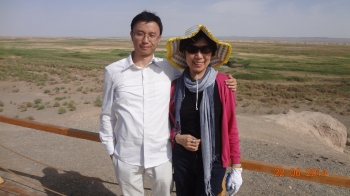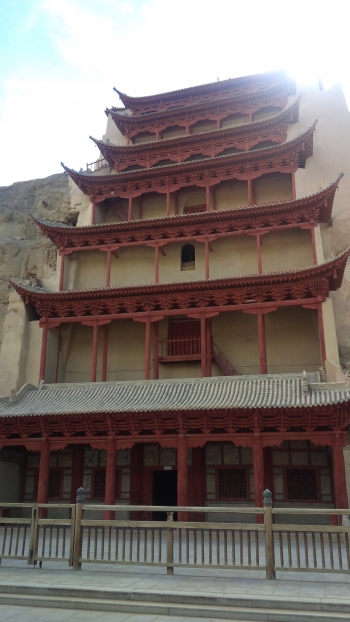Central to her cultural and artistic contributions is an unapologetic pride in being Chinese and Buddhist. “We Buddhists need to ask ourselves some serious questions,” she tells me. “Why should a Buddhist not value Buddha images? Why do people of all backgrounds love having a Buddha in their home or office? And, most crucially, why are today’s Buddhist sculptures often made poorly? We need to revisit what is here in Dunhuang so we can be reminded of the glory we can achieve.”
She argues that Buddhism’s image in China has suffered for the past century thanks to a lack of cultural awareness and appreciation of Buddhist culture on part of both Buddhists and non-Buddhists. “I think there is a possible long-term solution. We need to improve ourselves if we’re to improve Buddhism’s image. We must work towards becoming more cultured and artistically refined devotees, and provide educational resources to those who need them. And we must ask all Buddhists we know to do the same.” In other words, as people of culture, Buddhists must at least provide a positive impression that non-Buddhists can respect.
Mrs. Lee’s plan incorporates three vital virtues in her lectures and tours: faith (religion), artistic taste (culture), and academic erudition (scholarship). At the heart of her teaching style is a focus on the everyday; a mere hairbrush might contain an entire family’s story. Glimpses of family, romantic, intimate life have enchanted her audiences far more than the traditional narratives of empires, conquest, and edicts. “Scholarship should be done in the real world. True culture is seen in the everyday. Think of it this way: we talk about the Chinese middle class, a diverse demographic who occupy a bridge between the wealthy and the poor. But we only have an economic middle class. We have no cultural middle class who can understand elitist academics, but who can also identify with the culturally impoverished.” In China, we find ourselves swinging between a culturally unequipped majority and a minority of isolated experts who talk mostly among their cloistered circles. Mrs. Lee sees this as the defining cultural problem of our time, and her lack of formal training seems to be a boon in this sense.
“With all that said, I always say that we need to study deeply the karma we have with people, with things, with events. I think for all the Buddhist teachings I’ve absorbed over the decades, I can be honest when I say my personality hasn’t changed much,” she laughs. “I’ve always lived in the moment and gone with the flow. I’ve floated here and there, whether it was my life in Canada or my teaching about the Silk Road, Dunhuang, or art. I don’t feel attached now, and I feel free.”
She is emphatic about having lived without plans, even to this day. “I really didn’t plan my entry into studying material culture, and I certainly never had any long-term objective in teaching. Really!” she laughs, noticing my grin. “I’m not obsessed with plans about life, about work, about relationships. I live by the conditions dealt to me (yuan fen 緣分) and gratitude (gan en xin 感恩心). That’s all that was needed to take me here to beautiful Dunhuang.”
Perhaps Mrs. Lee’s insistence on the primacy of karma and conditions over her own agency is natural. We know that the sun gives light far and wide, but do we ever ask it what it wants to shine on?
Perhaps Mrs. Lee’s insistence on the primacy of karma and conditions over her own agency is natural. We know that the sun gives light far and wide, but do we ever ask it what it wants to shine on?


















